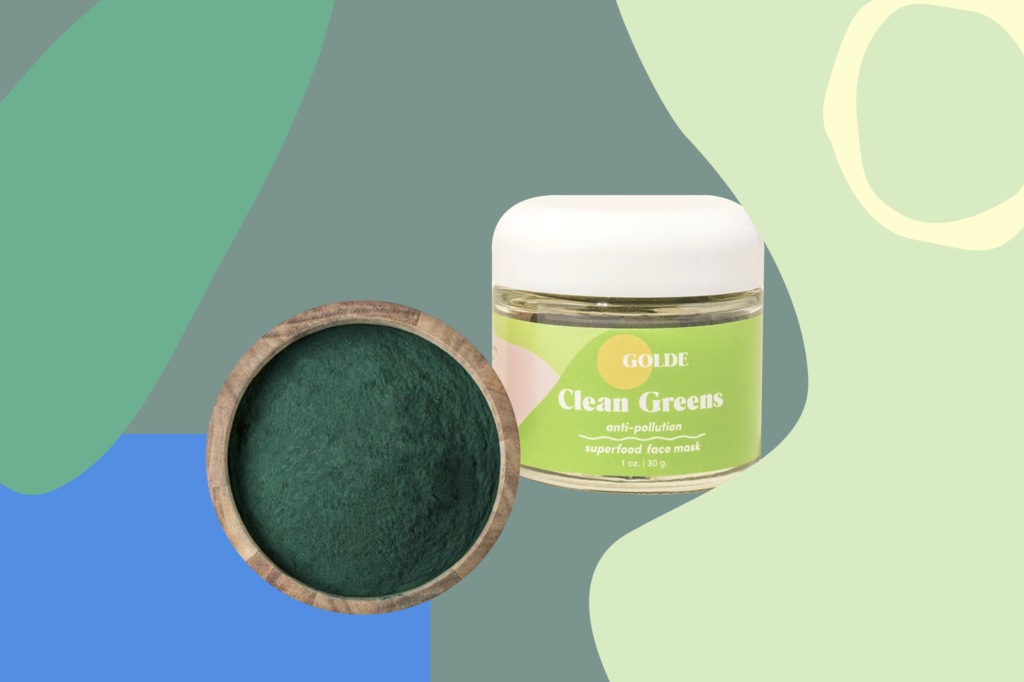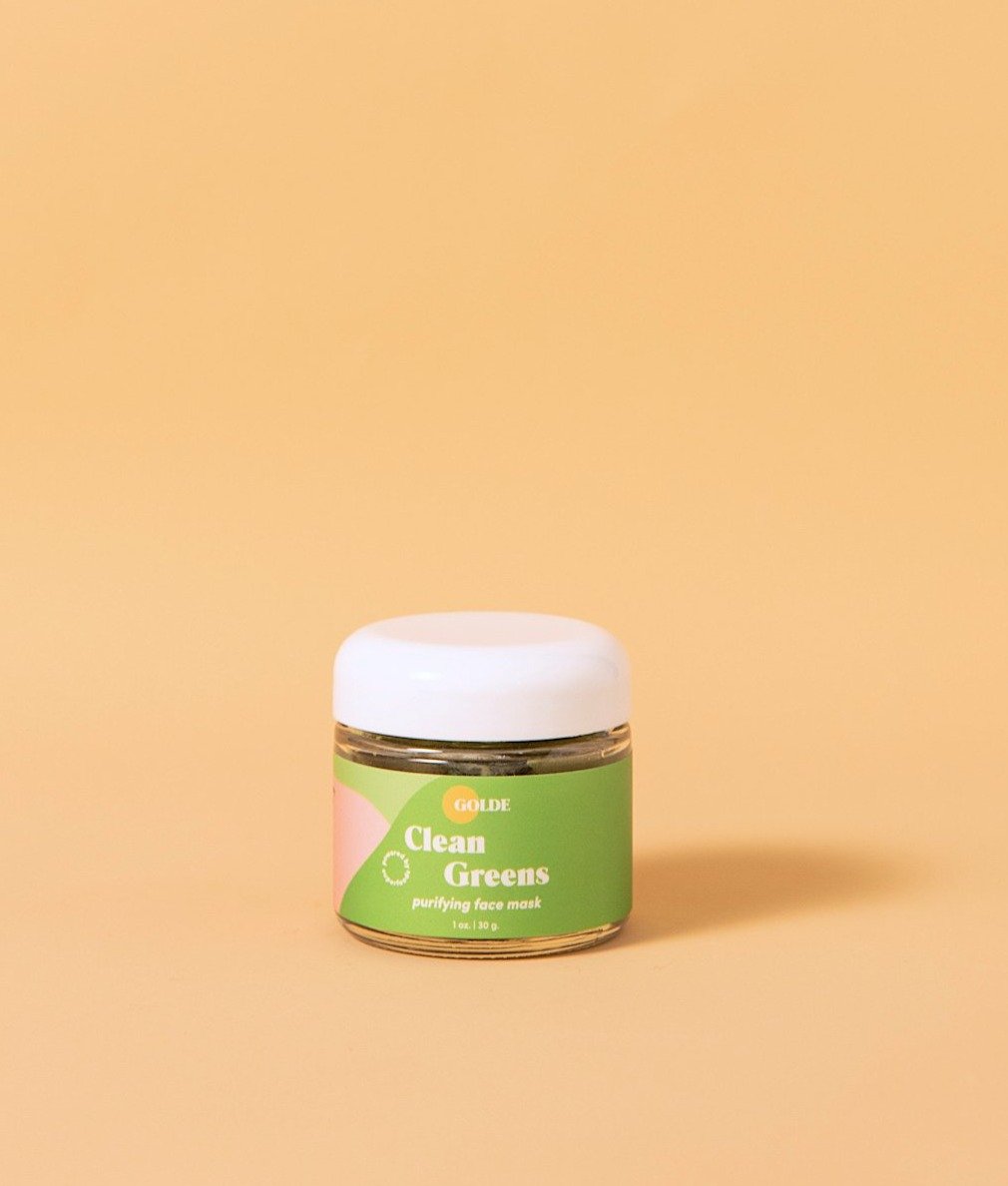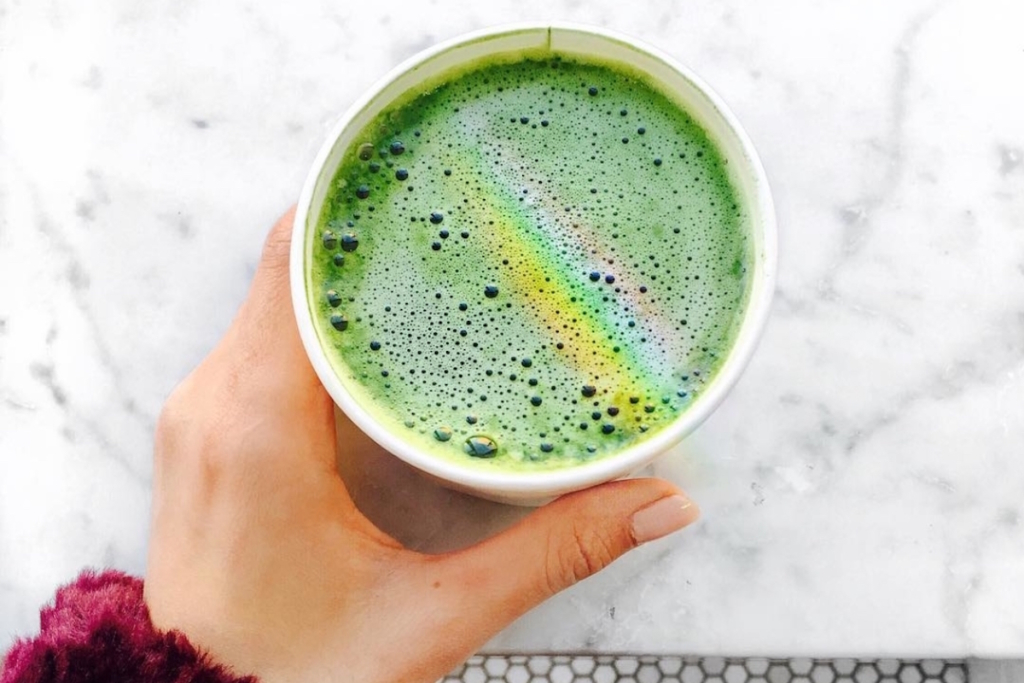
Welcome to the Wellness One-oh-Ones, a digital encyclopedia for all your wellness needs. This series is geared to tackle those everyday questions you secretly ask yourself in wonderment when you hear about a new trend. Instead of pretending to know what people are talking about, come hang with us as we uncover the latest and greatest in the wellness industry. Check back every other Wednesday to pick up your refill — no doctor’s signature required.
There are only a handful of supplements I use regularly, but spirulina has been one of my go-tos for years now. This powder packs a punch, both internally and externally, when it comes to maintaining a healthy being. Curious to know more? We got you covered.
What is Spirulina?
According to Trinity Mouzon-Wofford of Golde, spirulina is “a naturally occurring blue green algae that’s incredibly rich in nutrients,” and has been used around the world for thousands of years. There’s a reason it’s still relevant, and that’s because it’s “packed with minerals like calcium, iron, and phosphorous, alongside vitamins E, A, and B12,” just to scratch the surface. Spirulina contains so many different vitamins and minerals that it has in fact been hailed as one of the most nutrient dense foods in the world.
What Are the Benefits of Spirulina?
There are a slew of reasons to consume spirulina, and individual reasoning might vary. I personally take spirulina to help calm my skin and the look of redness, but some use it to keep digestion regular, or even to help combat anemia. Read about some of the most common uses below.
Spirulina and Digestion
Amidst the slew of nutrients spirulina provides, amino acids is a big player. Amino acids help to build enzymes, particularly, digestive enzymes. These digestive enzymes help break up protein and carbs in food, ultimately lending to an easier time using the restroom. If you feel as if you have a hard time going but find that fiber supplements are a bit too extreme in the other direction, try taking a small dose of spirulina before bed – I promise it makes mornings easier.
Spirulina and Antioxidant Properties
On top of all the nutrients we already covered, spirulina also delivers a healthy dose of antioxidants into the body. In particular, it delivers phycocyanin, an antioxidant that also lends to the deep blue-green color. Something we’ve discussed often in this series is the benefit of antioxidants for the skin. Antioxidants, whether ingested or used topically, fight free radicals on the skin (and free radicals weaken both collagen and elastin), making any antioxidant a beneficial ingredient to help slow down the aging process.
Spirulina and Anemia
Anemia comes in many forms, but can generally be described as having a reduced amount of red blood cells and results in overall fatigue and weakness. Supplements are usually prescribed, as consuming iron can increase those red blood cell levels. One of the many nutrients that spirulina carries is iron, and one tablespoon of spirulina powder can actually deliver 11% of your daily-recommended iron intake. While I wouldn’t recommend trying to treat your anemia with spirulina, know that it is a good addition to your normal routine. I personally am anemic, and while I do take iron supplements, I noticed increased energy when I began taking spirulina as well.
Are There Any Side Effects?
There are currently no known side effects from taking spirulina, but if you have an auto-immune disease, it’s recommended to speak to a doctor before trying.
Can It Be Used Topically?
Though I personally consumed spirulina primarily to benefit my skin, I never once thought about putting it on my skin… until Golde released their Clean Greens mask – a powder mask with spirulina, cholera, mango juice, and marshmallow root. This mask quickly became a staple in my routine, so I spoke to Trinity to get to know more about why such a superfood has such an impactful presence on my skin.
According to Trinity, “adding spirulina to your skincare routine has plenty of benefits – it can clear up breakouts, diminish redness, heal scarring, and help your skin retain more moisture.” Frankly, all of the concerns spirulina addresses are my personal skin concerns, which is why it was such an easy fit for me. Just as spirulina can deliver anti-inflammatory and antioxidant properties when ingested, it can do the same when applied topically. It’s “packed with antioxidants that can help fight the free radicals that accelerate aging and skin damage.” Therefore, applying spirulina can help reduce the look of any redness and irritation on the skin, but can also act as a gentle anti aging staple.
Clean Greens Face Mask
 Clean Greens Face Mask by GoldeNeed This Now| $34
Clean Greens Face Mask by GoldeNeed This Now| $34

